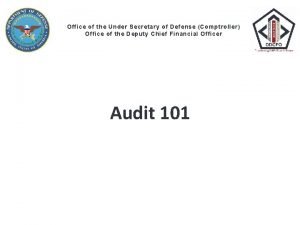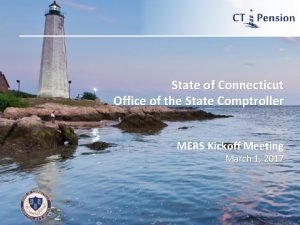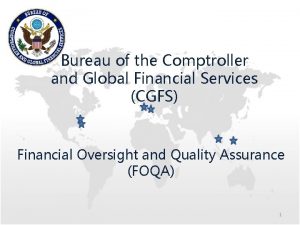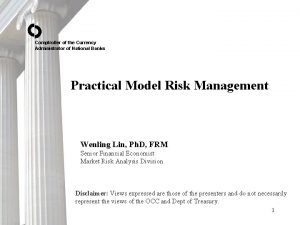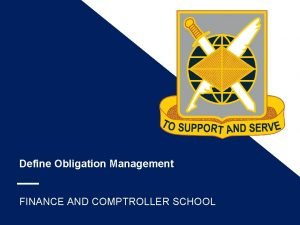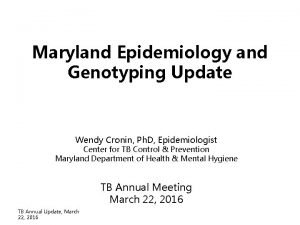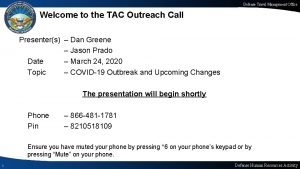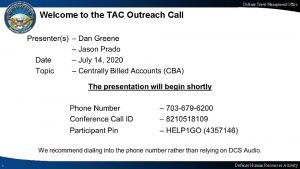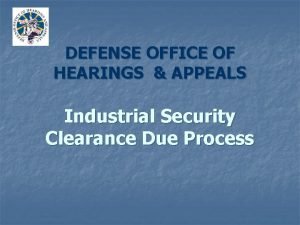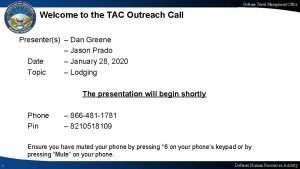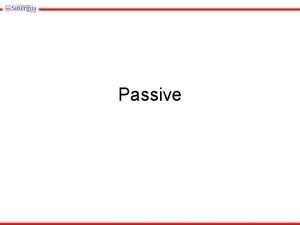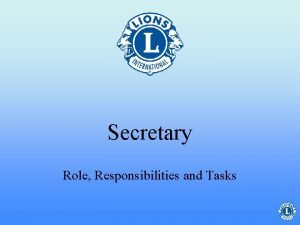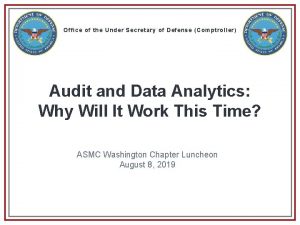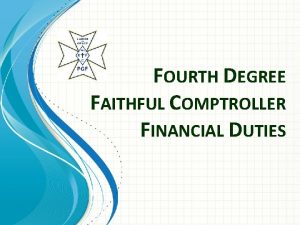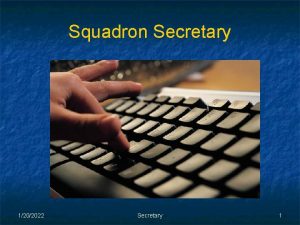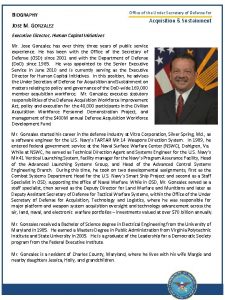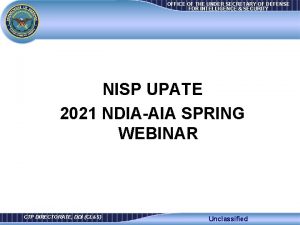Office of the Under Secretary of Defense Comptroller














- Slides: 14

Office of the Under Secretary of Defense (Comptroller) Office of the Deputy Chief Financial Officer Audit 101

Contents • What Is a Financial Statement Audit? • Purpose of Financial Statement Audit • What Is a Financial Statement Auditor Looking for? • Standard Phases of an Audit • Audit Opinions • Audit 101 Example: Auditing Property 2

What Is a Financial Statement Audit? Audit Defined Auditing is the collection and evaluation of evidence to support an opinion on the reliability of the financial statements of an entity. Auditor’s Responsibility • • Express an opinion based on tests performed against accounting and auditing standards. Summarize and present issues found to management: Notice of Findings and Recommendations (NFR). Management Responsibility • Preparation and presentation of the financial statements. • Design, implementation and maintenance of internal controls and systems. • Retain supporting documents to support financial events. • Remediate NFRs reported through the audit. A financial statement audit is not a one-time “check-the-box” exercise 3

Purpose of Financial Statement Audit Purpose The primary purpose of a financial statement audit is to provide an opinion about whether an entity’s financial statements are presented in conformity with generally accepted accounting principles (GAAP). Importance Transparency: Visibility into how Do. D accounts for funding. Accuracy: Do. D transactions are recorded correctly and free from error. Audit Reliability: Do. D processes and systems can be trusted and are dependable. Accessibility: Proof of how Do. D spends funding is obtainable in a timely fashion. 4

What Is a Financial Statement Auditor Looking for? Reliability of Financial Statements & Underlying Information Completeness Is anything missing? Existence or Occurrence Do they have it or did it really happen? Accuracy/ Valuation Rights and Obligations Presentation & Disclosure Are the numbers right? Do they own or owe what they think they do? Is it recorded in the right place? 5

Standard Phases of an Audit Testing Period Phase 1: Planning • Entrance Conference Phase 2: Internal Control • Understand entity’s operations • Understand systems and business processes • Initial analytical procedures to determine test plan • Determine nature and extent of testing of controls • Initial documentation requests • Assess internal control design and operating effectiveness • SAS 99: Fraud analysis Phase 3: Substantive Testing • Design tests of transactions Phase 4: Reporting • Perform transaction level testing • Aggregate test results (internal controls and substantive testing) • Provide KSDs for transactions • Conclude audit procedures • Form an opinion • Exit conference • Issue audit report Phase 5: Post-Audit Remediation and Sustainment • Track and monitor notice of findings and Recommendations (NFRs) • Implementation of corrective action plans (CAPs) for identified weaknesses • Report status of CAPs to OUSD(C) • Assess Compliance with Federal Financial Management Improvement Act of 1996 (FFMIA) Phases of the Audit Post-Audit Phase Regularly Occurring Status Meetings Audits will be continuous and ongoing – an annually recurring cycle 6

Audit Opinions At the conclusion of a financial statement audit, the auditor will issue one of the following opinions on the entity’s financial statements: Audit Opinion Unmodified Modified Definition No material or pervasive errors noted Qualified Material but not pervasive errors or the inability to obtain sufficient appropriate evidence Adverse Misstatements are both material and pervasive Disclaimer Unable to obtain appropriate evidence on which to base the opinion, and undetected misstatements could lead to errors that are both material and pervasive 7

Conclusion Financial statement audits require a strong working relationship between the auditor, OUSD(C), Reporting Entities, Service Providers, and Principal Staff Assistants (PSAs) Financial statement audits will require discipline and cooperation, but will facilitate the business reform and readiness essential to supporting the Warfighter 8

Audit 101 Example: Auditing Property

Example: Auditing Property Balances When auditing property balances, auditors will look at several areas: • Are all of the assets the agency uses included in the property records? • Do the property records include assets that do not exist or have been disposed? • Are the assets correctly valued? The tests auditors perform vary based on the financial statement line item(s) being audited 10

Auditing Property Comparing Financial Statement and Footnote Balances ü ü Auditors compare the balance sheet and statement notes Calculate the current year activity • CY activity = CY – PY • 50, 336. 7= 711, 717. 2 – 661, 380. 5 11

Auditing Property Comparing Footnotes to Property Records ü Note balances are compared to the Property Ledgers 12

Auditing Property Comparing Property Records to Supporting Documentation ü Are Assets Correctly Valued ü Does the Documentation Support the Balances Does the support match the: ü Asset Name ü Cost ü In Service Date ü Signed acceptance ü Date DD 1354 signed ü Who Signed 13

Auditing Property Testing for Completeness and Existence ü Do all included assets exist? ü Are all capitalized assets included? - Found Onsite - Not Found Onsite 14
 Osd comptroller
Osd comptroller Connecticut comptroller
Connecticut comptroller Secretary of defense executive fellows program
Secretary of defense executive fellows program Bureau of the comptroller and global financial services
Bureau of the comptroller and global financial services Comptroller of the currency administrator of national banks
Comptroller of the currency administrator of national banks Obligation management definition
Obligation management definition Wendy cronin
Wendy cronin Specific defense vs nonspecific defense
Specific defense vs nonspecific defense Dts stuck at cto booked
Dts stuck at cto booked Defense travel management office
Defense travel management office Cba dts
Cba dts Defense office of hearings and appeals
Defense office of hearings and appeals Defense travel management office
Defense travel management office The documents/print
The documents/print Lions club secretary duties
Lions club secretary duties
